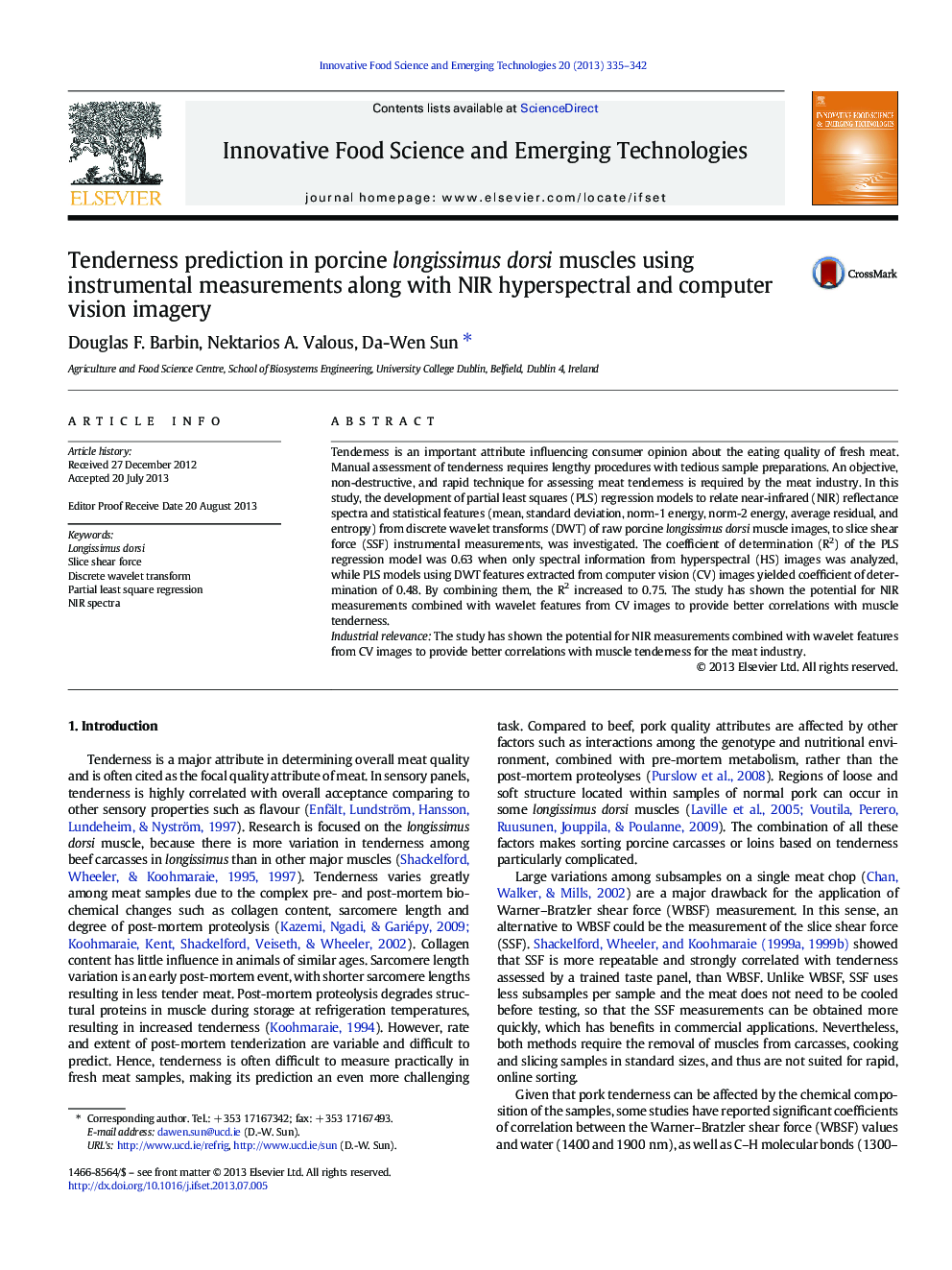| Article ID | Journal | Published Year | Pages | File Type |
|---|---|---|---|---|
| 2086607 | Innovative Food Science & Emerging Technologies | 2013 | 8 Pages |
•We predict pork tenderness by using computer vision and NIR hyperspectral imaging.•Spectral information was extracted from hyperspectral images.•Discrete wavelet transforms (DWT) were extracted from digital RGB images.•Better prediction results were achieved combining spectral information with DWT.
Tenderness is an important attribute influencing consumer opinion about the eating quality of fresh meat. Manual assessment of tenderness requires lengthy procedures with tedious sample preparations. An objective, non-destructive, and rapid technique for assessing meat tenderness is required by the meat industry. In this study, the development of partial least squares (PLS) regression models to relate near-infrared (NIR) reflectance spectra and statistical features (mean, standard deviation, norm-1 energy, norm-2 energy, average residual, and entropy) from discrete wavelet transforms (DWT) of raw porcine longissimus dorsi muscle images, to slice shear force (SSF) instrumental measurements, was investigated. The coefficient of determination (R2) of the PLS regression model was 0.63 when only spectral information from hyperspectral (HS) images was analyzed, while PLS models using DWT features extracted from computer vision (CV) images yielded coefficient of determination of 0.48. By combining them, the R2 increased to 0.75. The study has shown the potential for NIR measurements combined with wavelet features from CV images to provide better correlations with muscle tenderness.Industrial relevanceThe study has shown the potential for NIR measurements combined with wavelet features from CV images to provide better correlations with muscle tenderness for the meat industry.
